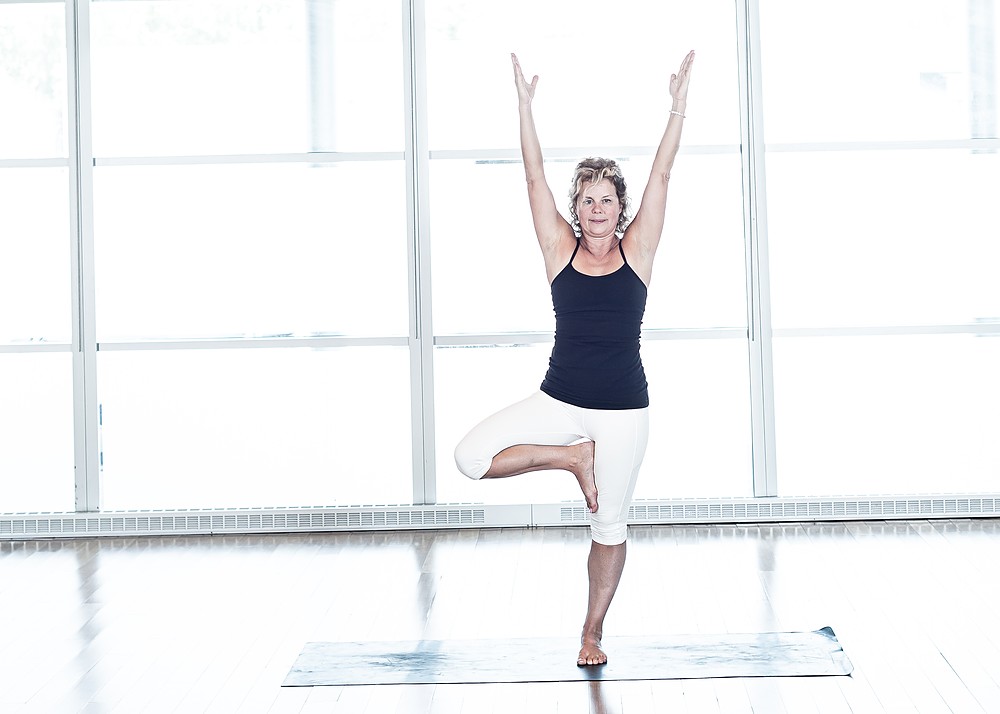Balance in yoga
Students and balance in yoga, it's not always a great love story... When you start yoga, you often see balance postures as a horror... It's difficult, you fall, you need strength... And frankly, why do you need to do that in yoga? You signed up only to relax and be cooler, but your Hatha Yoga class turned into a circus workshop one day... Don't worry, here are some explanations that will help you understand why balance postures exist and how to approach them in a more serene way.
Balance postures in yoga
Balance postures could be defined as any yoga posture that allows us to work on our balance. They can be done balancing on one leg, on the toes but also on the arms, hands or head. There are some very complicated balance postures that can only be adopted after years of practice. However, many balance postures will be accessible to you from your first session.
In order to achieve a successful balance posture, you will need to take into account these 3 elements:
- Alignment
- The strength
- Attention
First of all, strength allows us to hold in the posture. Whether it is to balance on one leg or on the hands, it is a work of cooperation with the whole body that is in the offing. Therefore, certain postures during the session will prepare us for balance by mobilizing specific muscles and joints. Indeed, even if yoga is a gentle discipline, it works the body in depth. You will therefore develop your muscles over the course of the sessions, which will allow you to maintain your balance more easily.
On the other hand, you will need perfect alignment to achieve balance. Indeed, we sometimes see attempts at postures where the student finds himself completely unbalanced. If the torso is too far forward in relation to the legs, if the legs are too slack and fall back towards the ground, if the spine is not straight, the balance posture will not hold or will not hold for long. Thus, alignment, so precious in most yoga postures, is really a key to successful balance postures.
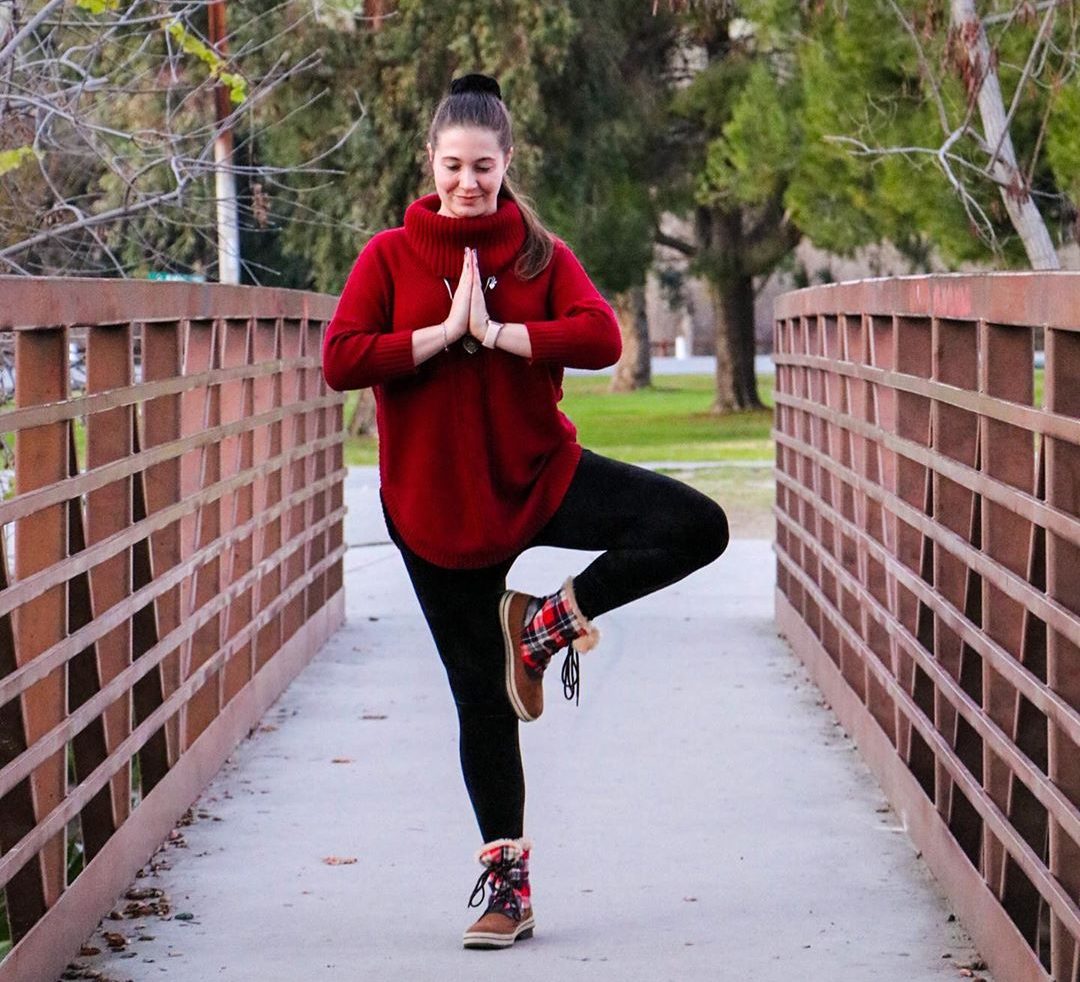
Finally, to achieve balance, you will need to be attentive to what you are doing, perfectly present and connected to your body. Achieving balance therefore requires a lot of intuition and body awareness. We gauge how far we can go, where our limits are. Moreover, we often "feel" that we are capable before our body itself proves it. Thus, these postures require above all concentration on the part of the students.
Balance in yoga
Do you dream of being able to do balances or on the contrary these postures frighten you? Let me explain to you why this type of postures exist within the Asanas. I promise, it is not only to torture the students and put them in difficulty! You will see that they even have many benefits.
During your first balances, you will often have the sensation of losing your footing without knowing why. Then, you will look all around you and your thoughts will loop back and forth threatening "You should do it! ». But in spite of all your good will, you will falter again and again...
Indeed, a mind clouded by its preoccupations cannot achieve balance. In balance, one must be there, only there. Fully present, concentrated on every gesture and every sensation. In order to achieve these postures, it will be necessary to leave aside your continuous flow of thoughts and doubts.
Yes, the mind cannot be cluttered when practicing balance. While in everyday life, let's be honest, we are often very scattered. Everything pushes us to pay little attention to what's going on inside. The billboards, the crowd, the notifications on our phone, our mailbox are all ways to distract us...
Nevertheless, you will learn over time, concentration is the first step in meditation.
Thus, if you wish to achieve inner balance, you will have to learn to cultivate concentration and not let yourself be disturbed by the outside world. Balance postures in yoga are a good way to achieve this.

If you start yoga at age 50, you're probably telling yourself that balance is not for you. Similarly, if you've never been very good at gymnastics, you're probably telling yourself that it's not going to start today. You may find yourself too clumsy, too tall, too round, not athletic enough to succeed in yoga balance postures.
In reality, these postures confront us with the beliefs we cultivate about ourselves. "What if, in fact, I could do it? ». Yoga will often help you to change what you think about yourself. But for this to happen, you have to agree on one thing: "Nothing in life is set in stone.
We are made to evolve and this is possible throughout our lives. Thus, the only thing that separates you from success in these postures is practice, concentration and dozens of attempts. Practicing yoga balances will help you stop telling yourself that you are not good at it. From now on, forget this idea and start telling yourself: "I can do it", "These postures are made for me", "I'm going to have fun and try! ».
This will make you want to do it and give you a boost in self-confidence. Then it will become something to apply in your daily life. What ideas do you have about yourself? Are you too shy? Not good at math? Not good at making friends? What if all this is just a label that you can remove at any time?
With the balances, we move our ego away
Balancing postures are also useful to get rid of one's ego. Of course, you can play hard and want to excel in a very complicated posture at all costs. But often, the beginnings are difficult, you fall, you fail... Sometimes you will feel helpless in front of other students who succeed.
Usually, you will end up laughing at yourself. Which is excellent to fight against your inner little man who always wants to control everything, succeed and please everyone.
It's true, not being able to get into a balanced posture will drive you crazy. And if you have the misfortune to practice in a group class, you will often feel ashamed or even humiliated. That's what balance postures are all about. Understand that you don't master everything, that you are not always good and thus regain humility. The balance postures push you away from your ego which sometimes believes itself to be superior to others or in competition with them.
Moreover, the ego hates to lose its footing. It is therefore very interesting to analyze our reactions to our failed balances. This allows us to gradually work on ourselves and to take life less seriously.
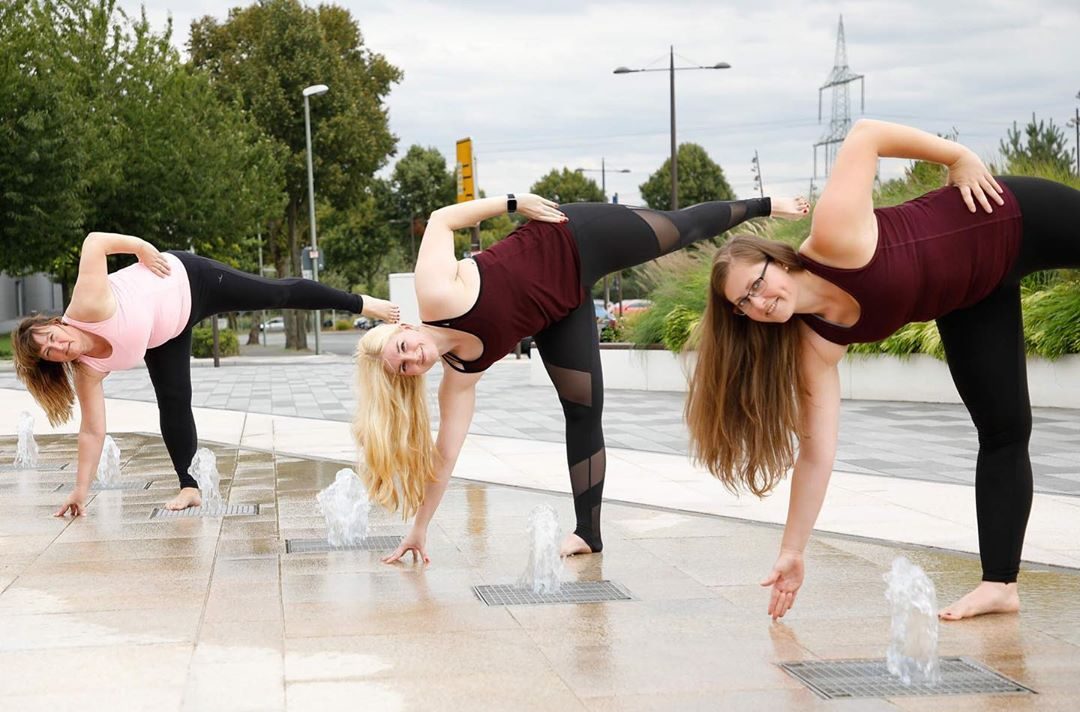
In addition, working on balance postures will often confront you with a loss of balance. This is something that as humans, we hate. Even more so nowadays where our lives are marked by routine, sedentariness and immobility. We feel that our balance is the most important thing in our lives. The slightest event that affects it leads to a profound loss of our bearings. Indeed, for years, we look for a stable job, financial regularity, a safe roof and we build our relationships in the same way... What happens when one of the elements goes away? How do we react when life pushes us around?
So, working on your balance in yoga will help you to manage everything that can destabilize you in life. You may not see the connection today, and yet, by staying stable and focused facing the outside (a noise, a movement, a light), you will develop your anchoring, your adaptability and your inner strength. So much so that one day, nothing will be able to make you fall.
The different balance postures
What are the balance postures in yoga? Here is a non-exhaustive list and how you can practice some of them.
Posture of the Tree, Vriksasana
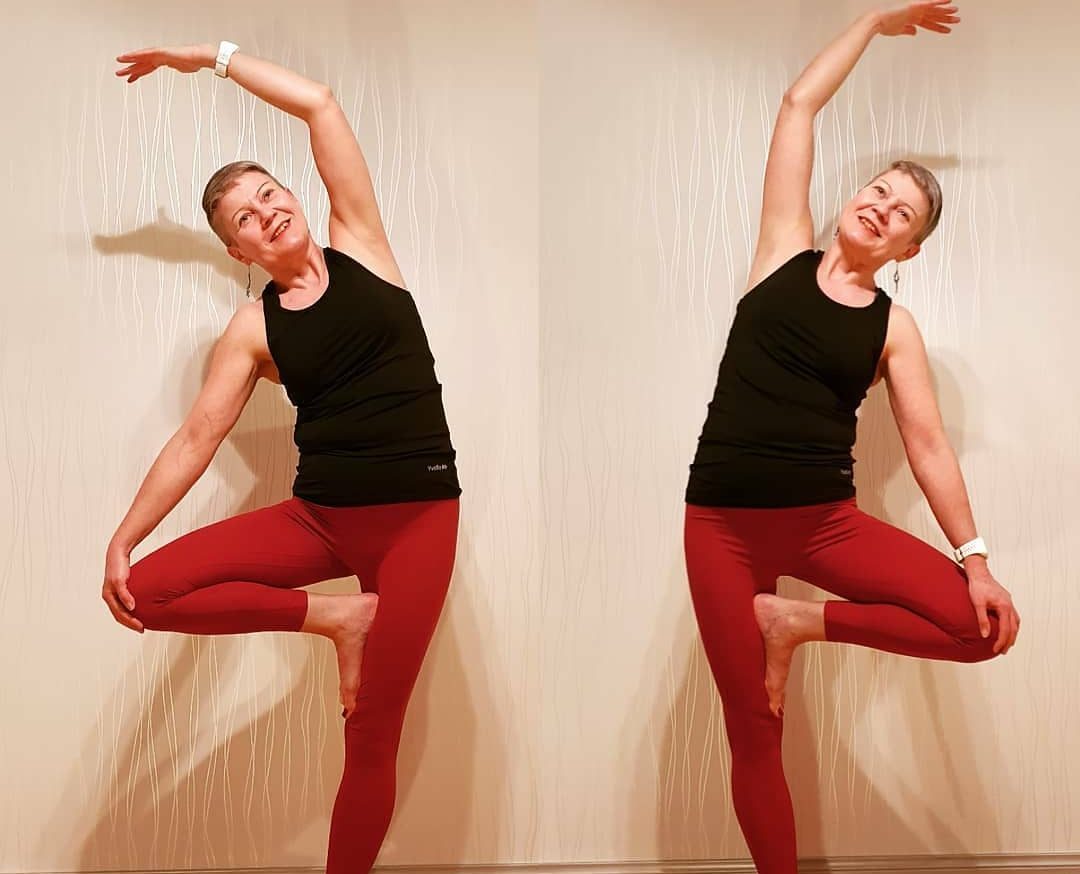
While standing on your mat, start by carrying your body weight on your left leg by lifting your right foot slightly off the floor. Then, place your right foot on your left ankle for a few moments. If you are comfortable, raise your right foot to the calf and place it just below the knee. The right leg and hip are open to the side.
If you are still keeping your balance, you can place your right foot as high as possible on your left thigh and work to open your hip as much as possible to the outside. To help you keep your balance, place your arms stretched out on each side of your torso, fingers towards the ground.
If you can do this well you can also :
- Put your palms together in front of your heart
- Raise your arms up to the sky on either side of your ears.
- Close your eyes
Warrior III, Virabhadrasana III
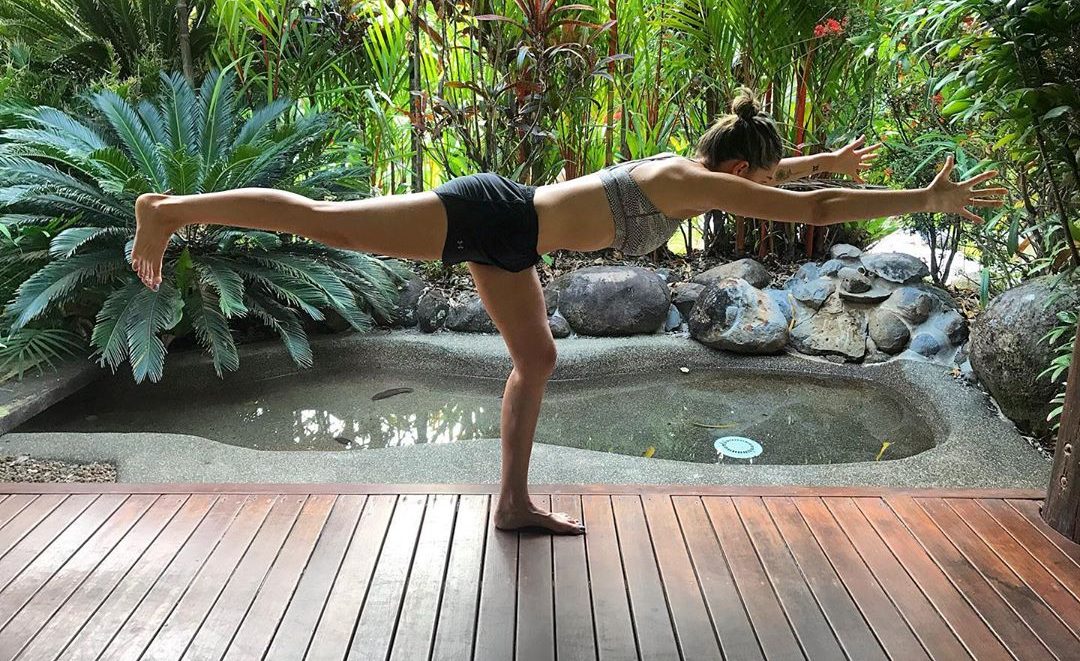
From the Warrior I position, bear your weight on the leg at the front of the mat. Raise the back leg and tilt your torso forward. Your rear leg is parallel to the floor with your hip closed and your rear foot flexed. The toes are pointing towards the floor. Your hands are joined in front of your heart, behind you like the wings of an airplane or arms stretched out on either side of your head.
Arm extended to the big toe, Utthita Hasta Padangusthasana
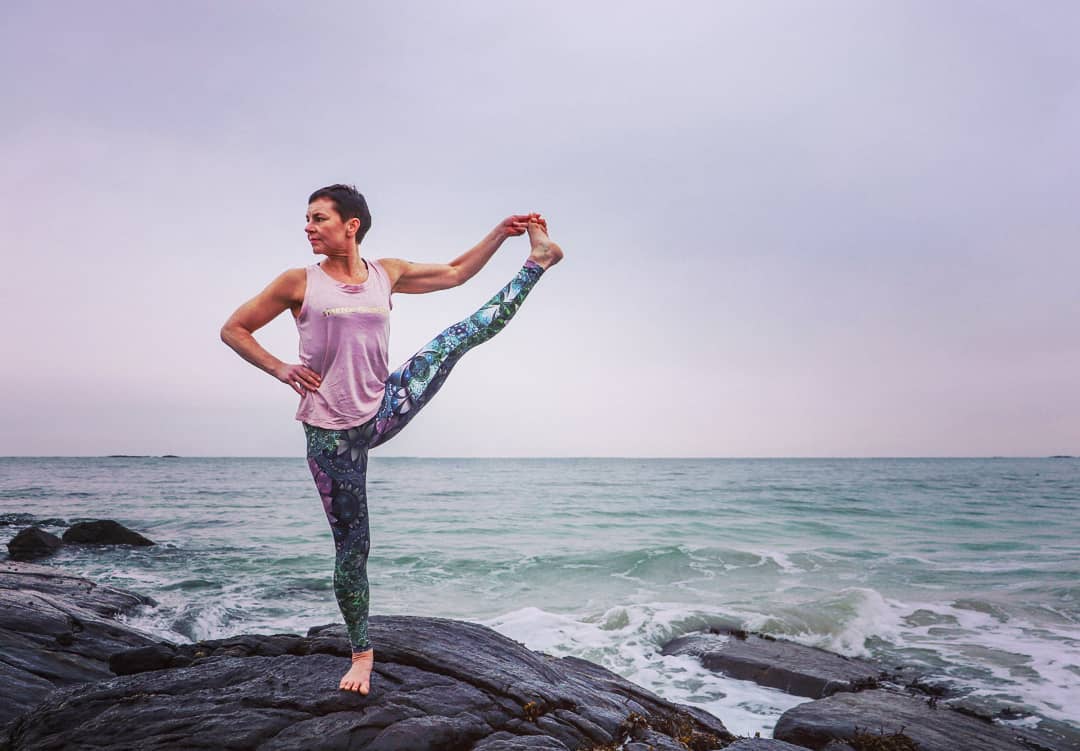
This posture is at an advanced level. Standing on your mat, place your left hand on your left hip. Bend your right knee, pull it up towards your chest and grab your big toe with the fingers of your right hand. Keep your back as straight as possible to work on this posture.
If you are more flexible, open your right hip to the side, stretch your right arm and extend your right leg. Remember to breathe well in this posture. Then bring your foot back to the front of the mat, bend your leg and bring it back to the floor on an exhalation.
Other balance postures in yoga
In general, I think that balance postures require learning alongside a certified teacher. So, here is a list of balance postures that I deliberately didn't explain much. I advise you not to do these postures at home for the first time.
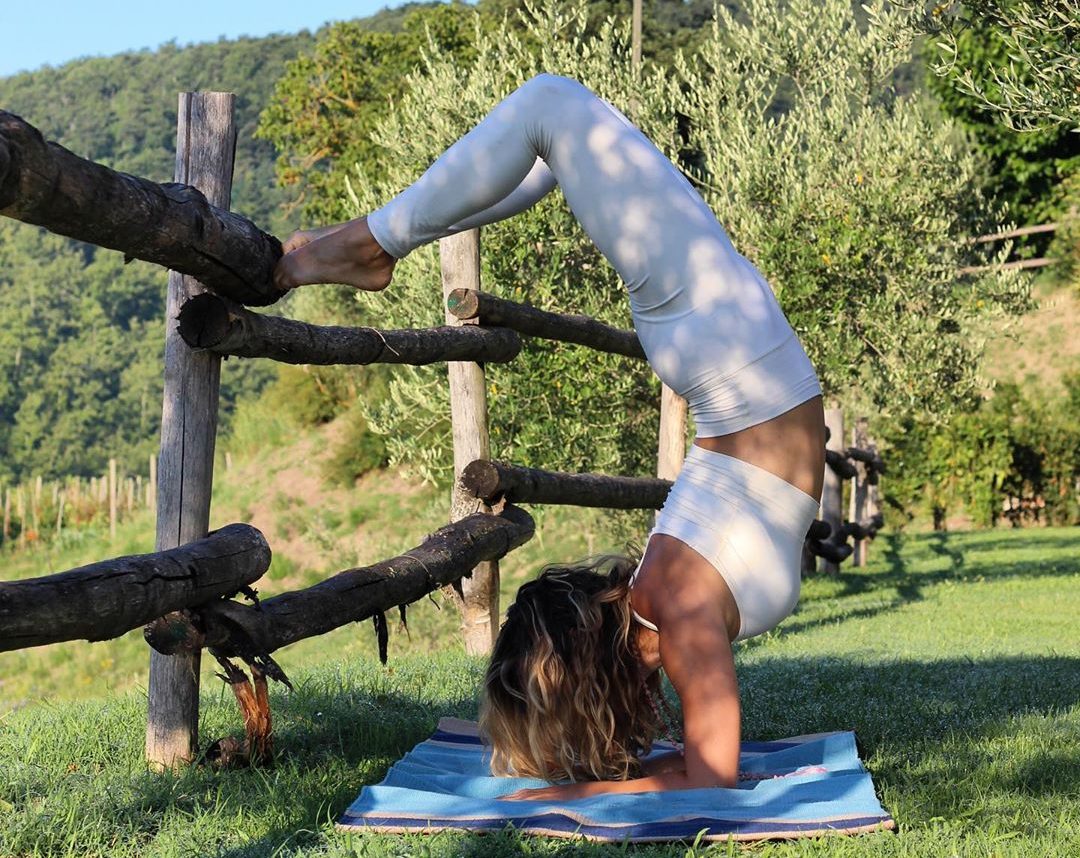
Ardha Chandrasana, the Half Moon
This posture resembles the Warrior III except that the hip is open and the bust is also turned on the side. One hand rests on the ground to hold the balance, while the other hand is turned towards the sky. This posture is open to beginners.
Raven posture, Bakasana
This balancing posture on the hands is done from the yogi squat. The legs are balanced on the elbows and the bust is bent forward. This posture is of an intermediate level.
Balance on the head, Sirsasana
This posture is carried out in balance on the head and the forearms which come to form a triangle. The body is completely aligned like a straight tree. This posture is of an intermediate level.
Posture of the tripod, Sirsasana II
Here, the hands are placed on the floor and the head is also used as a support point. One climbs into the posture by placing the knees on the forearms first before moving the body entirely upwards towards the sky. This posture is of an intermediate level.
Balance on the hands, Adho Muka Vrksasana
This posture looks like the straight tree you used to do in gymnastics: it's a balance on your hands. It requires working on strength in the arms, shoulders and having a perfectly sheathed body. It is an advanced level.
Balance on the forearms, Pincha Mayurasana
Pincha Mayurasana looks like the balance on the hands, but it is made on the forearms. To achieve this, you will need to have great flexibility in the shoulders and work especially on the dolphin posture regularly. This posture is of an advanced level.
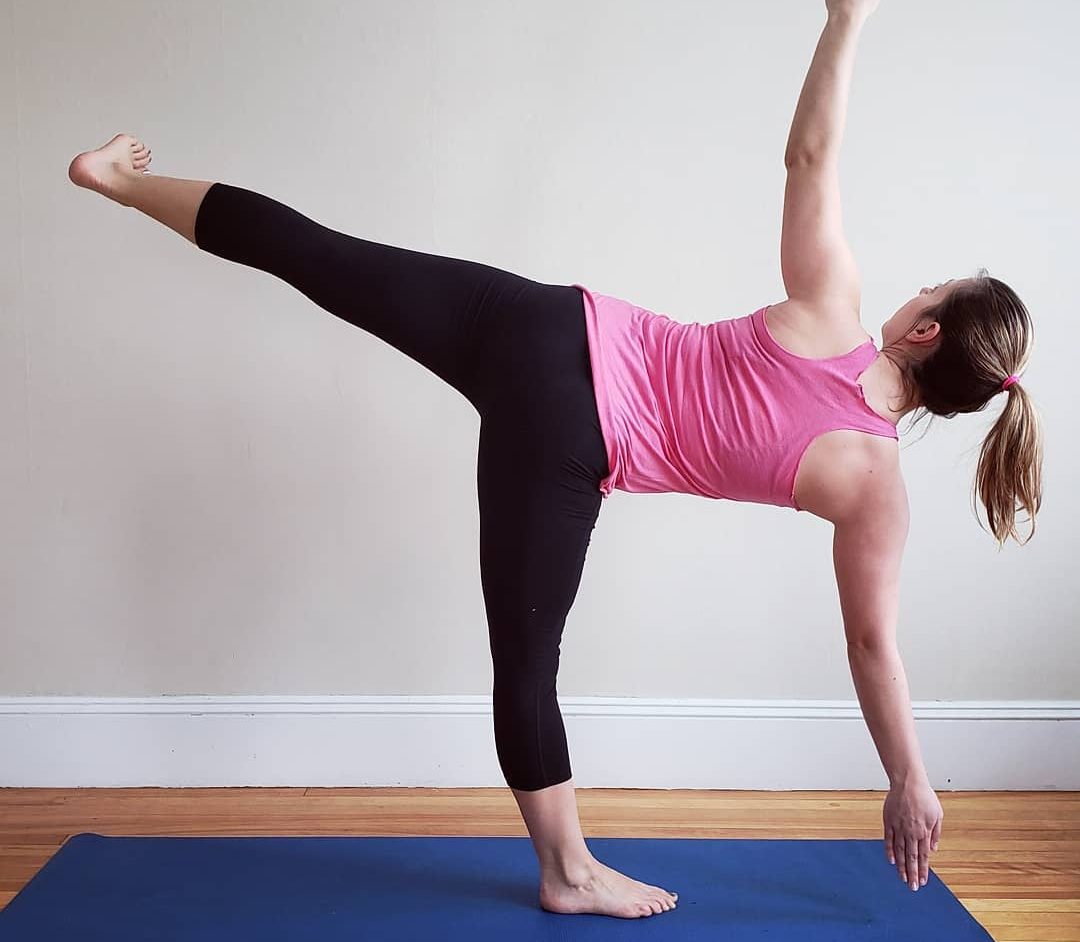
Tips for successful balance in yoga
Balancing therefore requires practice, concentration and of course, belief in yourself... Nevertheless, there are a few tricks that will allow you to be more comfortable with these postures from now on.
First of all, if you wish to do a balance posture, this will be easier by being as close to the ground as possible. So, take off your socks and choose a thin mat laid on a flat and solid surface. If necessary, step off your mat for one-legged balancing.
Also, before you start in a one-legged posture, start by shifting your body weight onto one leg, lifting one foot slightly. Similarly, imagine that your supporting leg is connected to the ground like the roots of a tree. Visualize that your leg is completely anchored to the ground, as if glued with glue. This is a trick that helps me a lot to keep my balance.
On the other hand, when balancing on one leg, look away to a fixed point. Avoid taking this point of reference from the person in front of you during a class. If they move, you will most likely fall.
On the other hand, if these postures are too difficult for you, you can always help yourself from a wall. If you're practicing yoga while pregnant, you should know that your center of gravity shifts throughout your pregnancy. Therefore, balancing will be much more difficult during this period of your life.
Finally, in Warrior III or Half Moon, consider micro-bending the knee of the support leg. This will help you to have more balance.
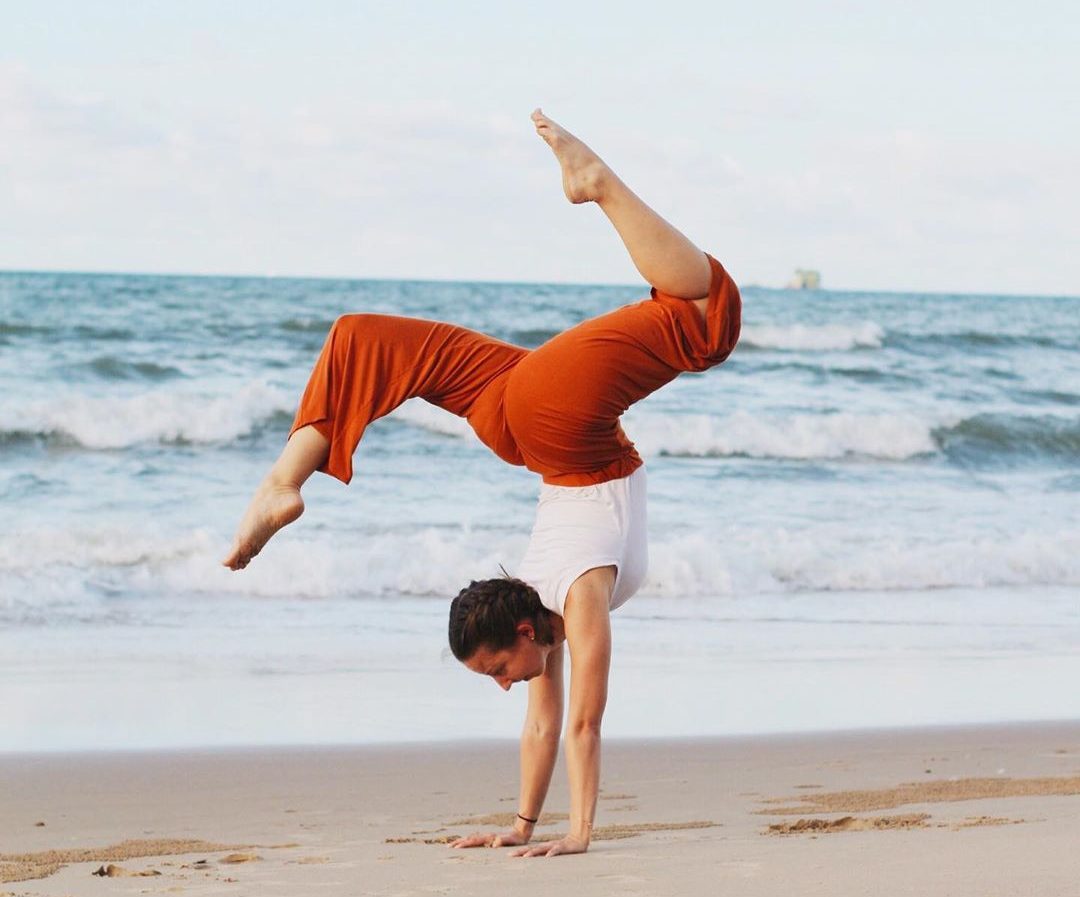
Your arms and hands: a key to keeping balance in yoga
Then, for all balance postures, you can play with the position of your hands or arms when you try a posture. In Warrior III for example, perhaps the posture will seem simpler if your hands are joined in front of the heart. You may also feel more comfortable when your arms are stretched out behind you like the wings of an airplane or stretched out in front of you. It's up to you to try what works best for you today.
On the other hand, it's not easy to hold a handstand posture for the first time. For example, in the Raven posture, one of the things that makes the position difficult is the way we're going to put our hands on the ground. Indeed, your fingers have several phalanges. So, like your toes, they have the ability to curl up to give you a better grip on the floor. This way, you will be able to play with your body weight more easily. I therefore advise you not to put your hands flat when posing the raven, but to keep them slightly raised. A bit like if you wanted to make tiger claws, while keeping your hand very close to the ground and the first phalanx flat.
Before attempting the posture, simply observe the feeling in your fingers, depending on whether they are placed completely on the ground or slightly raised.
Balance in yoga: the more difficult postures, how to do it?
Your level of practice is evolving and you wish to practice balances on your head or on your hands? In this case, I advise you first to experiment these postures with a teacher.
On the other hand, in this search for balance, the most important thing is to go step by step. Indeed, when we do gymnastics as children, we are always told to jump and see what happens. However, in yoga, it's just the opposite. We will seek control of the body before going any further. So instead of jumping, try to understand your feelings first. For example, in Sirsasana, instead of throwing your legs off, you can test the posture by simply placing your arms and head on the mat and bringing your legs up as close to your buttocks as possible. Even if your legs are not in the air, you are already working the posture this way and the muscles needed to go further. In short, go with control and slow motion, rather than in a rush.
In addition, I also advise you to take breaks. Indeed, these postures take a lot of energy. So, it is useless to test the same posture 5 times in a row. After 2 or 3 times, take the time to rest and try again another day.

After reading this article, I hope you feel more confident about testing the balances in yoga. Also, you now know that these postures are not only a means of torturing students, but that they have far more benefits than you might think. Feel free to share your experience with these postures in the comments section.


